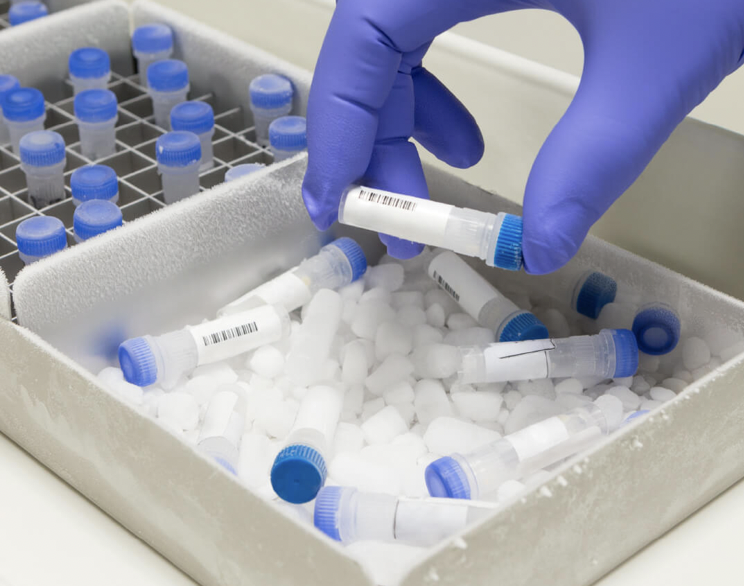
Do you know which drugs need to be refrigerated for preservation?
Carrying and Storing Refrigerated Drugs: Key Details for Protecting Health
In our daily lives, some drugs require special storage conditions – refrigeration for preservation. The active ingredients or dosage forms of these drugs are very sensitive to temperature. A little carelessness may affect their efficacy and even pose a potential threat to our health. Today, let's take a deep dive into the key points of carrying and storing these refrigerated drugs.
I. Why do these drugs need refrigeration?
First, let's understand why these drugs need refrigeration. Biological products such as insulin and human albumin are mostly proteins or polypeptides. They are prone to degradation or deterioration at high temperatures. Probiotics in microecological preparations need an appropriate temperature to maintain their activity. Too high or too low temperatures will reduce their efficacy. Some suppositories will soften and deform at high temperatures, affecting their use. And some ophthalmic preparations can maintain their stability and prolong their usage period after being refrigerated. Therefore, refrigeration is essential to ensure the quality and efficacy of these drugs.
II. Precautions for Storage
-
Temperature Control is Crucial
When storing refrigerated drugs at home, ensure that the temperature of the refrigerator is set between 2°C and 8°C. It is recommended to use a thermometer to regularly measure the temperature inside the refrigerator to ensure accuracy. At the same time, avoid placing the drugs on the refrigerator door rack where the temperature fluctuates greatly. Try to choose the middle layer or the rear wall of the lower layer. -
Keep Away from Light
Many refrigerated drugs are also sensitive to light. Direct sunlight can accelerate the deterioration of drugs. Therefore, place the drugs in a place away from light. For example, use brown or opaque containers to store drugs or keep them in their original packaging to avoid exposure to sunlight. -
Do a Good Job in Moisture Prevention
Drugs that get damp easily undergo hydrolysis and other chemical reactions, leading to a decrease in efficacy or failure. When storing drugs, ensure a dry environment. You can place desiccants around the drugs, but remember to replace the desiccants regularly to maintain their moisture-absorbing effect. -
Regular Inspection is Important
Regularly check the expiration date, appearance, and properties of drugs. If you find any abnormal conditions such as expiration, discoloration, precipitation, or an unusual smell, stop using the drug immediately and consult a doctor or pharmacist for advice.
III. Key Points for Carrying
-
Choose a Suitable Refrigerated Container
When we need to carry refrigerated drugs out, choosing a suitable refrigerated container is crucial. Insulated boxes and cold storage bags are good choices. They can effectively maintain the temperature of drugs. When choosing a refrigerated container, pay attention to its insulation performance and sealing property to ensure that it can meet the storage requirements of drugs. -
Prepare Sufficient Cold Sources
Ice packs or ice cubes are important cold sources when carrying refrigerated drugs. Before departure, freeze the ice packs or ice cubes to the appropriate temperature in advance. According to the length of carrying time and the external ambient temperature, prepare enough ice packs or ice cubes. At the same time, properly package the ice packs or ice cubes to avoid direct contact with drugs. -
Packaging and Isolation of Drugs
To prevent drugs from being squeezed, collided, or getting damp during carrying, properly package the drugs. You can wrap the drugs in plastic bags or sealed bags and then place them in a fixed position to avoid shaking inside the refrigerated container. In addition, ensure there is a certain isolation between drugs and ice packs or ice cubes to prevent drugs from being affected by the cold source. -
Replenish Cold Sources in Time
During the carrying process, replenish the cold sources in time according to the melting situation of the ice packs or ice cubes to ensure that the drugs are always within the appropriate temperature range. If the carrying time is long, consider using electronic refrigeration equipment such as portable refrigerators.

White Ice Water Emergency Bottle 1: For emergency or standby, when there is an unexpected situation, use the white ice water bottle, filled with easily accessible ice water to extend the refrigeration time by 12 hours.
IV. Handling Special Situations
-
Handling After Opening
For some refrigerated drugs, after opening, their storage conditions may change. For example, after insulin is opened, it can be stored at room temperature below 30°C for 4 weeks. However, if the room temperature is higher than 25°C, it is still recommended to store the drug refrigerated and place it in a closed and dry container before putting it in the refrigerator. Generally, refrigerated eye drops can be stored at room temperature for a maximum of 7 days after opening. If not used up after 7 days, they should be discarded. -
Precautions During Transportation
If long-distance transportation of refrigerated drugs is required, choose an appropriate transportation method and ensure the temperature and safety of drugs during transportation. You can use professional cold chain transportation services or consult a doctor or pharmacist before transportation to understand the precautions.
